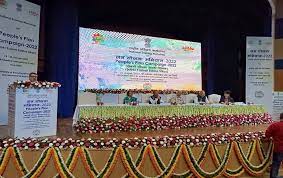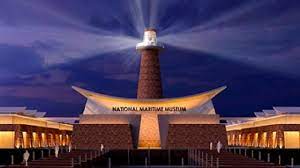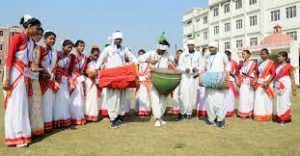Today Current Affairs: 21st October 2022 for UPSC IAS exams, State PSC exams, SSC CGL, State SSC, RRB, Railways, Banking Exam & IBPS, etc
Table of Contents
Mission DefSpace:

Prime Minister (PM) Narendra Modi recently launched Mission DefSpace in Gandhinagar.
- The space programme aims to develop innovative solutions for the Defence Forces through industry & startups.
- Importantly, the initiative will prepare India for future possibilities in space domain and will also increase the country’s preparation further.
- Under Mission DefSpace, 75 challenges are being opened to get innovative solutions, based on the defence requirements in the space domain.
- The programme will focus on various challenges in this area that have been reviewed and identified by the three defence services.
- There are more than 60 developing countries with whom India is sharing its space science. Many African countries and many other small countries are benefiting from this.
- The ‘South Asia satellite’ is an effective example of this. By next year, ten ASEAN countries will also get real-time access to India’s satellite data.
Mission To Save Vultures:

Tamil Nadu recently launched mission to save critically endangered vultures.
- The committee, which has a two-year tenure, will take steps for monitoring the conservation and recovery of existing vulture sites and mapping of vulture populations across the State for creating safe zones.
- It will work to eliminate the use of toxic veterinary drugs (Diclofenac), the main reason for vulture fatalities.
- Prevention of poisoning of cattle carcasses, the principal food of vultures, is also one of the responsibilities of the newly formed committee.
- In Tamil Nadu, four species of vultures are found —
- the Oriental white-backed vulture,
- the long-billed vulture,
- the red-headed vulture, and
- the Egyptian vulture.
- The first three are residents and can be found in the landscapes of the Nilgiris and Sathyamangalam.
Vulture population:
- 96% of India’s vulture population declined between 1993 and 2003.
- Therefore, the Central government put into place two action plans to protect the species at the national level — the first in 2006 and the second, ongoing plan for 2020-2025.
- One of the important action points in this nationwide plan is the formation of State-level committees to save the critically endangered population of vultures.
Vulture species in India:
- 9 species of vultures are found in India.
- Of these nine species, 4 are listed as Critically Endangered species of Vultures and one as endangered species in IUCN red list of endangered species.
Web 3.0:

According to NASSCOM’s latest report, India is home to 11% of the global Web3.0 talent and employs nearly 75,000 blockchain professionals.
- The study titled “The India Web3 Start-up Landscape, An Emerging Technology Leadership Frontier,” was aimed at promoting a broader understanding of the diverse possibilities with Web3 and the landscape of Web3 start-ups in the country.
- According to the study, in the last two years, Indian Web3 start-ups have grown to a 450-plus community with four unicorns.
- Between 2021-2022 alone, India registered more than 170 new Web3 start-ups, yielding over 50% CAGR growth since 2015.
- While global response to Web3 was still shaping up, India’s growing economy, demographic dividend, and exponential adoption of emerging technologies across sectors, positioned the country to become one of the highest growth markets for Web3 globally.
Web 3.0:
- Web 3.0 or Web3 is the third generation of the World Wide Web.
- It is an evolving term that refers to a “read-write-execute” web – with decentralization as its bedrock.
- It speaks about a digital world, built leveraging the blockchain technology, where people are able to interact with each other without the need of an intermediary.
- Web 3.0 will be driven by Artificial Intelligence and machine learning.
- It has now become a buzzword incorporating concepts such as blockchain technologies, metaverse and non-fungible tokens (NFTs).
Swadesh Darshan 2:

The Union Government to launch Swadesh Darshan 2 with chosen destinations from 15 States.
- Fifteen States are part of the first phase which include Madhya Pradesh, Karnataka, Tamil Nadu, Uttar Pradesh, and Maharashtra.
- The initiative is being taken as part of the first phase of the ‘Swadesh Darshan 2’.
- Some of the prominent places identified are Jhansi and Prayagraj in Uttar Pradesh, Gwalior, Chitrakoot and Khajuraho in Madhya Pradesh and Ajanta and Ellora in Maharashtra.
- It is promoted as part of India’s new domestic tourism policy which moves away from theme-based tourist circuits and focuses on revving up destination tourism.
Swadesh Darshan Scheme:
- The Swadesh Darshan Scheme was launched by the Centre in 2014-15 for the integrated development of theme-based tourist circuits.
- Under the scheme, the Ministry of Tourism provides financial assistance to State governments, Union Territory Administrations or Central Agencies for development of tourism infrastructure in the country.
- The Swadesh Darshan scheme is 100% centrally funded.
- According to the third Tourism Satellite Account for 2017-18, 2018-19, and 2019-20, the contribution of tourism to the employment of the country is 14.78%, 14.87 % and 15.34 % respectively.
- The total jobs generated by the by tourism are 72.69 million (2017-18), 75.85 million (2018-19) and 79.86 million (2019-20).
People’s Plan Campaign–2022:

Ministry of Panchayati Raj is organising a two-day National Training Workshop on People’s Plan Campaign–2022 during 19th – 20th October, 2022 in New Delhi.
- Ministry of Panchayati Raj organises People’s Plan Campaign (PPC) every year (Sabki Yojana Sabka Vikas) from 2nd October to 31st December.
- This year also PPC–2022 was launched on 2ndOctober, 2022 to prepare District/ Block/ Gram Panchayat Development Plans for the year 2023–2024.
- The Ministry of Panchayati Raj has evolved thematic approach aggregating 17 Sustainable goals into 9 broad themes of Localised Sustainable Development Goals (LSDGs) at grassroots level.
- In this PPC 2022, Panchayats will prepare Gram Panchayat Development Plan (GPDP) on these 9 themes by adopting Whole-of- Government and Whole-of-Society approach.
- The Panchayat Development Plan aims to strengthen the role of elected representatives of Panchayats and SHG Women under DAY-NRLM in effective Gram Sabha.
- The Ministry’s Plan document terms GPDP as a catalyst for transforming rural India and describes it as a comprehensive participatory process which involves full convergence with schemes of all related Central Ministries, line departments related to 29 subjects listed in the Eleventh Schedule of the Constitution.
Deendayal Antyodaya Yojana-National Rural Livelihoods Mission (DAY-NRLM):
- DAY-NRLM aims at mobilizing rural poor households into Self Help Groups (SHGs) in a phased manner and provide them long-term support to diversify their livelihoods, improve their incomes and quality of life.
- Most of Mission’s interventions are being implemented and scaled up by the SHG women themselves who are trained as community resource persons (CRPs) – Krishi Sakhis, Pashu Sakhis, Bank Sakhis, Bima Sakhis, Banking Correspondent Sakhis etc.
- The Mission is also working on empowering the SHG women through awareness generation and behaviour change communication on issues like domestic violence, women’s education and other gender related concerns, nutrition, sanitation, health etc.
National Maritime Heritage Complex (NMHC):

Prime Minister Narendra Modi reviewed the construction of the National Maritime Heritage Complex (NMHC) site at Gujarat’s Lothal via video conferencing.
- Lothal was one of the southernmost sites of the Indus Valley civilization, located in the Bhāl region of what is now the state of Gujarat.
- The port city is believed to have been built in 2,200 BC.
- Lothal was a thriving trade Centre in ancient times, with its trade of beads, gems and ornaments reaching West Asia and Africa.
- The National Institute of Oceanography in Goa discovered marine microfossils and salt, gypsum crystals at the site, indicating that seawater once filled the structure and it was definitely a dockyard.
- Lothal was nominated in April 2014 as a UNESCO World Heritage Site, and its application is pending on the tentative list of UNESCO.
National Maritime Heritage Complex (NMHC):
- The project began in March 2022, and will have several innovative features such as Lothal mini-recreation, which will recreate Harappan architecture and lifestyle through immersive technology; besides four theme parks – Memorial theme park, Maritime and Navy theme park, Climate theme park, and Adventure and Amusement theme park.
- It will also house the world’s tallest lighthouse museum, 14 galleries highlighting India’s maritime heritage starting from the Harappan time till today, as well as a coastal states pavilion displaying the diverse maritime heritage of Indian states and UTs.
Tribal Youth Exchange Programme:

Ministry of Youth Affairs and Sports in collaboration with Ministry of Home Affairs recently organised 14th Tribal Youth Exchange Programme for the development of Tribal Youth in New Delhi.
- Nehru Yuva Kendra Sangathan has been organizing Tribal Youth Exchange Programme since 2006 for the development and main streaming of Tribal Youth in collaboration and financial support from Department of Left Wing Extremism (LWE), Ministry of Home Affairs, Govt. of India.
- During this financial year 2022-23, 26 Tribal Youth Exchange Programmes are being organized by NYKS across the country.
- The aim of this programme is to sensitize LWE Tribal Youth to Rich Cultural Heritage of India.
- It also aims to enable them to appreciate the concept of unity in diversity, expose them to development activities and industrial advancement and at help the tribal youth to develop emotional linkages with their peer groups in other part of the country and enhance their self-esteem.




